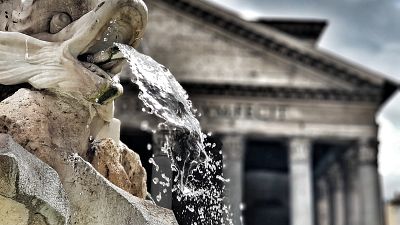What does Italy’s drought mean for your holiday and how long will it last?

Italy is suffering an extreme drought amid soaring temperatures and a severe lack of rainfall. As the government brings in emergency measures, what will this mean for visitors to the country?
Italy’s worst drought in 70 years
After months without heavy rainfall, northern Italy is battling its worst drought since 1952. The Po River, the longest in Italy, is hitting record low water levels.
Spiking temperatures and a lack of snow in the mountains that normally feeds the river are exacerbating the situation.
Stretching from the Alps in the northwest to the Adriatic Sea on the east coast, the vast waterway is a vital source of water for several regions. It is used for drinking water, irrigating crops and producing hydroelectric power across northern Italy.
Other rivers are also drying up. The Arno, which flows through Florence and provides tap water, and the Tiber, running through Rome, both have water at half the normal levels for June.
Italy imposes emergency measures
The regions that rely on the water of the Po River are calling for the government to declare a state of emergency.
Junior health minister Andrea Costa said that, in the regions of Lombardy, Piedmont, Veneto and Emilia Romagna, “The conditions necessary to declare a state of emergency have been met.”
More than 100 towns in the Po valley have already been asked to ration water overnight amid the drought. A state of emergency would greenlight the introduction of water rationing throughout the affected regions. Italy’s government is likely to make an announcement in the coming days.
There are also growing concerns for hydroelectric plants, which have generated some 40-50 per cent less power over the past few months. One plant in Piacenza in the Emilia Romagna region has already been forced to temporarily shut down its turbines because of the low river water levels.
In Lazio, the region around Rome, the regional government has already independently declared a “state of calamity.”
This has seen water restrictions imposed in several municipalities around Lake Bracciano, 32 km northwest of Rome. The measures have banned the use of water for washing cars, watering gardens and cleaning external patio areas.
In the capital, the city’s water board is lowering the pressure in the pipes so that the water supply is reduced without having to be suspended.
Travel advice amid Italy’s water bans
There are currently no restrictions on visiting Italy as a result of the drought. However, travellers should look out for further emergency measures that may soon come in.
The northern regions of Lombardy, Piedmont, Veneto and Emilia Romagna are considering water rationing measures that would permit water use only for essential activities. This could see a ban on filling swimming pools.
In Villorba, a municipality in the Veneto region, residents are not allowed to water gardens, wash cars or fill swimming pools between 6am and 11pm. The ban is in place until 30th September.
Some local councils are evaluating a restriction on water use for fountains and water parks. Italy’s association of amusement parks has suggested using filtered seawater at attractions near the coast. Other parks may be forced to close.
Rome’s emergency measures may see public drinking fountains turned off, as occurred during a drought in 2017.
Should water rationing come in, it will see drinking water supplies suspended during the night.
How long will Italy’s drought last?
Alarms continue to grow as the drought shows little sign of easing. The summer is forecast to be hot with scant rainfall and the water level of the Po River is continuing to drop.
Restrictions introduced in the next few days are likely to remain in place for some weeks if not the whole summer.
